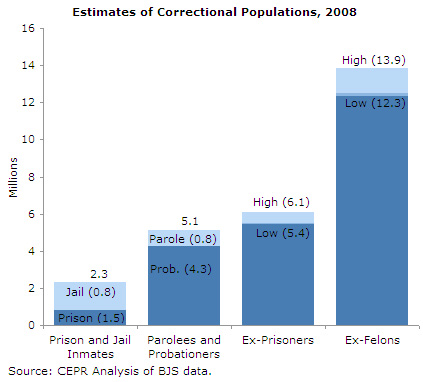The first study of California’s paid family leave (PFL) program details just how well it works for employers as well as families. Through California’s Paid Family Leave, eligible employees receive up to six weeks of wage replacement at 55 percent of their usual earnings to bond with a new child or care for a seriously ill family member. It is funded solely by employees paying into the program.
You can read Center for Economic Policy and Research’s Eileen Appelbaum and UCLA/CUNY’s Ruth Milkman’s report for the details but here are a few highlights:
A representative sample of 253 employers and 500 employees using PFL were surveyed in 2009-2010. Appelbaum and Milkman found that an overwhelming majority reported good results. Here’s what employers reported:
- 89 percent said that PFL had either a “positive effect” or “no noticeable effect” on productivity.
- For 91 percent, profitability/performance was neutral or positively affected.
- 96 percent reported a positive of neutral effect on turnover
- 99 percent (!) reported positive or neutral effects on employee morale
- 91 percent said “No” when asked if they were aware of any employee abuses of the program.
And from workers, a few highlights include:
- 84 percent of those in low-quality jobs using paid family leave received at least half of their usual pay while on leave.
- Only 41 percent of workers in low-quality jobs not using PFL received any pay while on leave
- The rate of bonding claims filed by men has climbed steadily since the beginning of PFL.
- Duration of breastfeeding among new mothers who used PFL also increased.
The report explains, “According to California’s Employment Development Department, in FY 09-10, 167,253 Californians used Paid Family Leave for bonding with new children and 23,220 used it to provide care for seriously ill family members.” Even so, one of the biggest problems they report is that too few people know they are eligible to participate. According to the report, “half the workers interviewed did not know the program existed, despite having had a qualifying circumstance for which to use PFL; low-wage workers, immigrants, and Latinos were least likely to be aware of the program.”


 Bridgette A. Sheridan
Bridgette A. Sheridan Here’s something we don’t need a piece of research to tell us (though I’m going to tell you about a really good example): men with MBAs earn a lot more than women with MBAs. Most of the gap is explained by having children – which costs women but not men. Most of that parental-status tax costs women because they have to give up time at the office.
Here’s something we don’t need a piece of research to tell us (though I’m going to tell you about a really good example): men with MBAs earn a lot more than women with MBAs. Most of the gap is explained by having children – which costs women but not men. Most of that parental-status tax costs women because they have to give up time at the office. Here’s how it works: if you call it a “diversity initiative” or a “work family intervention” or stuff like that there’s the chance that you will see resistance to the project of, well, promoting diversity, or creating a family-friendly work place. On campuses, all the earnest and the marginalized check it out and everyone else goes, “what? Oh, I don’t think I got that email.”
Here’s how it works: if you call it a “diversity initiative” or a “work family intervention” or stuff like that there’s the chance that you will see resistance to the project of, well, promoting diversity, or creating a family-friendly work place. On campuses, all the earnest and the marginalized check it out and everyone else goes, “what? Oh, I don’t think I got that email.”
